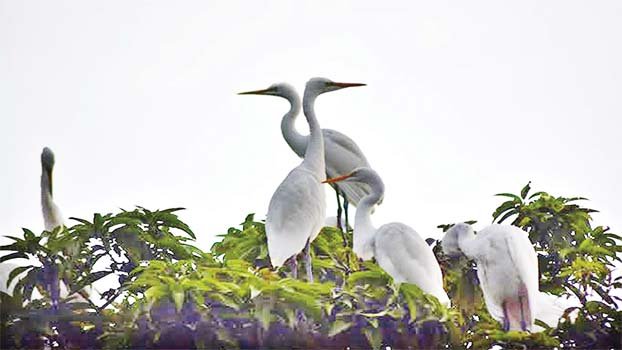White herons, storks become rare in Dinajpur

White herons, which used to fly in flocks through water bodies in search of food in Dinajpur district, are now on the verge of extinction due to indiscriminate hunting, climate change impact, want of food in water bodies and the loss of habitats. The storks and white herons have already become very rare in Dinajpur district.
It is learnt, from time immemorial, the white herons have been admired as an enchanting source of beauty in the arena of Bangla poems.
The flying of hundreds of white storks and herons in flocks on the background of blue sky during the evening or contemplation of innumerous white herons over the green carpet of marshy land have occupied a special position in Bangla literature.
The flying of those herons and storks to their nests in the evening and twittering of those birds at their nests on top of bamboo trees in the evening are now only a memory.
According to sources, among eight species of white herons and storks, five species of those are now found in our country. These herons are usually 45 to 150 centimetre long in size with long legs and elongated beak and the entire body is covered with while feathers.
Though killing and hunting of all sort of wild birds and wild animals are banned and a punishable offence in our country, some dishonest people indiscriminately hunt the bird through gun fire, arrows and by setting baits and nets. Some even hunt herons with their pet heron by evading the vigilance of law enforcers.
In a recent visit to Ghughudanga union of Dinajpur district, a huge flock of white herons were seen to stand silently to catch fish and aquatic insects on the green grass of the water body.
The gathering of such a large number of white herons is a source of enchanting beauty. However, due to impact of global climate change and the deforestation, the herons seem to fleeing away from our environment.



